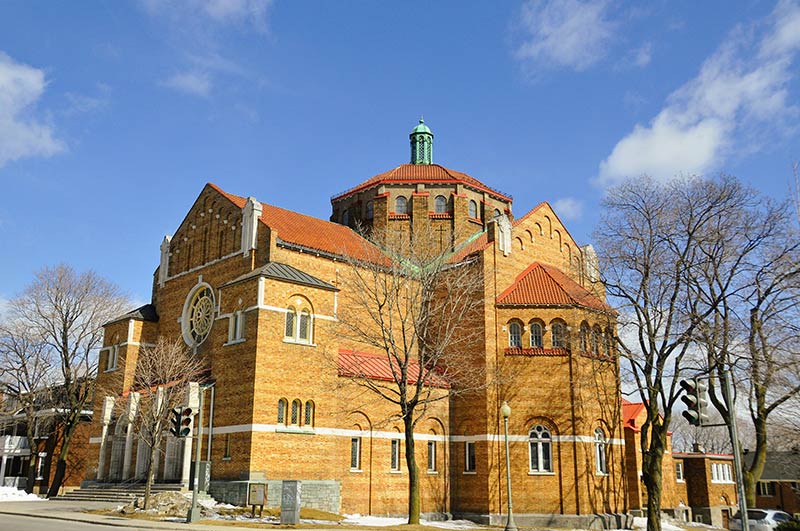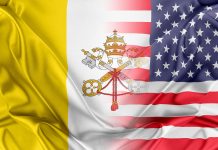To what extent is ecumenism included in God’s concerns? Does God’s agenda include this objective?
No Christian can oppose the unity for which Christ Himself prayed.[1] Despite this fact, the ecumenical movement in Christianity visibly presents two divergent attitudes. On the one hand, the ultraconservative side not only has no concern for inter-church union, but even anathematises any dialogue or ecumenical initiative. The other side is represented by the ultra-liberals, for whom dialogue, acceptance, and mission seem to matter more than truth—for the sake of good and peace, beliefs can be compromised. Ultra-liberals see sectarian attitudes in any anti-ecumenical movement. Does choosing a middle option represent balance or compromise?
Ecumenism: framing difficulties
From the moment of Christ’s prayer for the unity of His disciples until today, we can easily observe the continuous concern of the church to put this desideratum into practice. It is a concern made concrete through prayers, through the preaching of the Gospel—and, sometimes, even through manipulation and violence. As noted in the previous articles of this series, many atrocities have been committed in the name of Christian unity.
Fear or the struggle for power, the political and economic contexts, and potential dangers have often represented occasions for union. History legitimises questioning the meaning, purpose, and motivations of today’s religious leaders in their quest to achieve the unity of the Christian churches. If in the first centuries of the Christian church, during the Middle Ages, during the pre-Reformation period, during the Reformation and after, the interests gravitated to a great extent around power, authority, and material resources, what motivates ecumenism today? What does this ecumenical attribute of Christ’s church mean?
Ecumenism is not a monolithic construction, but rather a modular one. This is the result of meanings accumulated in different periods of time or of the ways in which ecumenism is understood, depending on the cultic orientation of the religious leaders. The interests and goals pursued by religious leaders, in different periods of time, have influenced and still influence the concept of ecumenism in a way that creates difficulties in defining it.
The evolution of ecumenism
Ecumenism has its origins in the genesis of the Christian church. The church’s exhausting search for unity was met with a continuous series of schisms and divisions. Today, Christianity is divided into three main branches: Orthodox, Catholic, and Protestant. The Roman Catholic Church represents the majority group, consisting of 1.2 billion members; Protestants and Orthodox are close to a billion. The Orthodox are divided into Eastern Orthodox and Greek Orthodox, which, in turn, are divided into several subgroups. Within the Protestant branch, five major dominant groups can be found: Anglican, Lutheran, Reformed, Methodist, and Evangelical.
Even if it did not manage to encompass all the ramifications of the three major Christian religious groups, the ecumenical movement is an attempt at the visible restoration and reconciliation of the Christian churches in faith, sacraments, and confession.[2] The Joint Working Group between the Roman Catholic Church and the World Council of Churches,[3] for example, considers ecumenism the will of Jesus, rather than a human invention, seeing the unity of believers as a shadow of the communion that exists in the Godhead (Trinity) between the Father, the Son and the Holy Spirit.
The first ecumenical conference took place in 1910, in Edinburgh. This world conference had mission as its sole purpose—unity in evangelisation, intending to facilitate and speed up the preaching of the Gospel to every human being. This initiative was strictly Protestant and had as its motto: “The evangelization of the world in this generation”.[4] In 1921, the first International Protestant Missionary Council was established, which the Orthodox Church also joined in 1925. Although the Catholic Church did not join because of their fundamentally different ecumenical ideology, they delegated representatives as observers, for dialogue.
These initiatives and the armed conflicts of the Christian world of that period led, in 1948, to the formation of a World Council of Churches. The unity of Christians seemed to offer stability, strength, and solutions even to the non-religious problems of society—solutions to the injustice and violence of the two world wars.
Ecumenism (coming from the Greek term oikoumene, meaning “world, worldwide, universal, popular, or inhabited”[5]) acquired, starting from 1919, the meaning of “new Christian organisation” or “new international church organisation.”[6] There have been attempts to create an ecumenical council or conference of churches under the banner of this new ecumenical meaning both in Europe and in the United States. In 1937, the usage of this term was standardised at the Oxford Conference[7], and it referred directly to the institutional/organisational meaning, with respect to the unity of the church.[8]
In its 1990 statement on ecumenical responsibility, the Massachusetts Council of Churches stated: “Unity, however, does not mean uniformity. Within the Christian community, we need to celebrate a rich diversity which flourishes. Ecumenism consists not in losing the distinctive features of our various traditions, but in appreciating them as many ways of proclaiming and demonstrating our common faith rooted in a common baptism. Where differences create barriers to our unity, we trust the transforming power of the Spirit to work in us and through us.”[9]
Ecumenical perspectives
Although the differences between the Roman Catholic Church and the Orthodox Church are smaller than between these two churches and the Protestant ones, the reconciliation of the traditional churches seems less likely. This is primarily due to conservative Orthodox factions and the Orthodox perspective on ecumenism, which sees unity in dogma, achievable through sacraments and the episcopate. The main difficulties in the process of uniting the historical churches, Roman Catholic and Orthodox, pertain primarily to papal primacy[10] and the filioque problem.[11]
Since the early days of the Christian church, there have been tensions over the authority of the centres of religious influence. After the Great Schism of 1054, they were reduced to two great powers, the West and the East, but the nature of the conflict intensified, and the chasm between them seemed impossible to overcome. While the Orthodox Church joined the modern ecumenical movement from the beginning, the Roman Catholic Church did not affiliate to any ecumenical association.
The Roman Catholic Church participates by representation in some meetings, but only in the role of observer. This is primarily due to the concept of catholicity (sobornost) and apostolic succession. The Roman Catholic Church does not accept the status of “sister” but of “mother church.” For the Catholic Church, ecumenism is more an expectation of the return of the lost younger sisters.
Until 1442, the Catholic Church was the one that initiated or sought the union with the Orthodox Church, but with the demand to be recognised as a higher authority, by primacy. The 1274 Council of Lyon and the 1438-1422 Council of Florence[12] were the last organised attempts at unification. During that period, the social-political context offered a favourable environment for the Catholic Church to show its support to the Orthodox Church in the face of armed conflicts and invaders, in exchange for union, under the condition of recognising the primacy of the Roman Church.
The culture of the Roman Catholic Church, which was for a long time traditional-exclusivist, was influenced after the Second Vatican Council, 1962-1965, by a modernist current of thought. Expressing regret regarding certain deplorable actions of the past, recognising “heretical sects” as separated brothers, promoting freedom of conscience and theistic evolution, separating church and state, and so on—all these liberal characteristics transformed the image of the Catholic Church and created a suitable climate for the development of ecumenical premises.
After Vatican II, the Roman Catholic Church officially entered the global ecumenical movement, not by being part of the World Council of Churches, but by setting up its own office: the Pontifical Council for Promoting Christian Unity.[13]

Among Protestants, the Seventh-day Adventist Church, for example, has a stance that formally resembles that of the Roman Catholic Church. The Adventist Church is not a member of any ecumenical organisation either. It does not accept affiliation or alliance with other Christian churches in ecumenical organisations, but considers itself an ecumenical church in Christ, based on the authority of the Holy Scripture. Unlike the Orthodox and Catholic perspectives, the Adventist Church does not associate the achievement of the Christian unity desired by Christ with mystical or political elements.
Like the Roman Catholic Church, the Seventh-day Adventist Church participates in the Conference of Secretaries of Christan World Communions (CS/CWC), which is a separate initiative from the World Council of Churches. The Conference of Secretaries of Christan World Communions is not an organisation, but only a conference that aims to share information, concerns, and reports regarding the identity and mission of each participating church.
CS/CWC does not aim to create a new Christian community, nor to change the creed of the involved churches.[14] Each member presents their church and its doctrines. This dialogue is useful in order to obliterate prejudices and facilitates getting to know society and the participating churches, which thus becomes a tool for adapting the missionary message.
Where are we in the ecumenical movement?
The World Council of Churches brings together 500 million Christians, divided into 348 churches, from 110 countries—churches such as the Orthodox, Anglican, Baptist, Lutheran, Methodist, Reformed, and other independent churches. This representation is not a significant increase compared to 2007, when 25% of the Christian world was part of this global ecumenical organisation.[15] The desideratum of this association is still far from being achieved, although the Lutheran-Catholic Joint Statement of October 31, 2017, brings us closer to a global imperialist-spiritual age.
The Joint Declaration on the Doctrine of Justification, signed by the Lutheran World Federation and the Roman Catholic Church in 1999, was also adopted in 2006 by the World Methodist Council, and in 2017 by the World Communion of Reformed Churches. On October 31, 2017, the Declaration was also signed by the Anglican Communion, during a solemn ceremony at Westminster Abbey.
Risks and opportunities
After more than 70 years of the existence of an organised ecumenical movement, there are tendencies to reinterpret the beliefs and the mission of the churches directly involved in the phenomenon. The inspiration and authority of the Bible, proselytism, the parousia, and the state-church relationship are just a few aspects directly influenced by the ecumenical movement.
The ecumenical understanding of evangelisation does not go far beyond the idea of promoting harmony and peace among people. It addresses, above all, salvation from oppressive political or social regimes, hunger, or racism, but it is little concerned with the nature of the atoning Gospel. Unintentionally or purposefully, ecumenism redirects evangelical concerns inward and, thus, mission/evangelisation loses its outline more and more.
If proselytism, as freedom of expression and circulation of the Word, is the enemy of ecumenism, then ecumenism acquires radical-political dimensions, a Mediaeval totalitarian attitude. The ban on proselytising is similar in spirit to political ecumenism. Unity cannot be achieved by coercion, but only on the basis of love and freedom. Global spiritual imperialism[16] is one of the great risks that the ecumenical movement is taking and putting a stop to proselytism will be the main means to observe the imperialistic nature of ecumenism.
On the other hand, ecumenism risks undermining the authority of the Bible, by assuming the principles of liberal theology. Although today the Bible is available to Christians, the way it is adapted to the secularised world by liberal theologians strips it of the normative quality of revelation. This leads to a demythologising of the Gospel message, in which the inspiration was extracted from the text and placed in the subjectivism of human experience. It is not the Word that is inspired, but what the human experiences. The truth is that only by relativising the biblical message can you make room for everyone in the great church of Christ. The values and principles of liberal theology are fundamental to ecumenical premises.
At the same time, ecumenism proposes a relativisation of faith. Based on the idea that each individual will be saved, in their own way, and that all denominations emphasise certain truths and interpret them from their perspective, which is conditioned by time and culture, Frederick the Great believed that bringing together various religious denominations in what has been called a “cocktail” would balance the universal Christian faith.[17] A little from you and a little from me makes for the pure body of Christ’s church. Everyone’s experience is likely to reveal a part of the truth, so that only together can the churches reflect the image of Christ.
Another teaching influenced by the ecumenical movement is the expectation of Christ’s return to Earth. The concept of the parousia is also present in ecumenical thinking, but not with real implications and impact in mission or in everyday life. The idea of urgency or eschatological imminence is not found in any statement of the ecumenical movement.
The principle of separation of church and state is reinterpreted by the ecumenical movement. An ecumenical understanding of sociopolitical responsibility makes the transition from individual involvement to an institutional one.
However, the direct involvement of church institutions in political matters, for the benefit of society,[18] is dangerous. It places the church institution in open relations with the state, which implies their collusion. The church can contribute to the good of society by training honest, fair, and just people, who make their contribution to society, but the transition from the individual involvement of Christians to institutional involvement opens the way for fraternisation between the state and the church. History confirms the dire consequences of such an approach. Holy wars, persecutions, and the Inquisition are just some of them.
If compromising the unity of churches, belief and evangelisation are the risks of the ecumenical movement, its notable opportunities and benefits include sharing the specific message of the churches, learning through dialogue in order to convey the message in a wise way, clarifying some problems informally, and the elimination of prejudice. According to Adventist theology professor Ángel Manuel Rodríguez,[19] a church must not isolate itself from the Christian world and its search for unity but communicate its values, so that prejudice is removed and unity in Christ may be fostered.
Conclusions
The World Council of Churches has an approach to ecumenism that begins with the invitation of the churches to be part of the hoped-for unity of Christians, so that, later, they will gradually leave their initial, specific, confessional position. Scripture presents the opposite approach. First, the believer is called out of Babylon and then led to unity in truth and love.
Accepting “Babylon”[20] within Christian unity in the hopes of transforming it in a way that accommodates membership in the great Christian church seems not only a utopia, but also a dangerous and extreme approach. God paints an ecclesiological picture in which the church of Christ is not a majority body, and before the second coming of Jesus, the church (not the megachurch) will be a minority one, symbolised by a remnant—a remnant that keeps the Law of God and has the faith of Jesus.[21]
This fact is not prescriptive, but descriptive. Without predestining, the Omniscient God describes the reality of the future. This does not allow us to be against the unity of truth and love that Jesus wanted, nor does it exempt us from this mission, but it makes us responsible and aware of the dangers of power and of counterfeiting. In unity there is power, and power in the hands of the selfish individual is dangerous.
The diversity manifested by having different beliefs has developed and continues to develop society. Globalisation in social-economic terms can bring solutions to some practical problems, but why would religious unity, the unity of beliefs, and their expression through various means and rituals be so important?
In a postmodern climate—where the core values are acceptance, the removal of extrinsic structures and authority, diversity, and relativity—why should we be so interested in becoming one, thinking alike, and relating to the same body of authority? The great danger in trying to unite two churches is that of forming a third! The desire for all to be one implies belief in an absolute truth, a truth that determines the fate of people.
In the presence of a non-negotiable faith and a conquering missionary spirit, ecumenism loses its raison d’être. This is the spirit of Scripture, the opposite of the spirit of the ecumenical movement which pleads for inclusion, negotiation, and the removal of proselytism.
Read the previous articles of this series:
The Christian Church is presented in the New Testament as being united in truth and characterised by holiness, joy, faithfulness, obedience and mission.[22] The relationship between the Father, the Son, and the Holy Spirit is one of unity in nature, beliefs, will and purpose. It is not a unity based on acceptance and tolerance—or on sacrificing some values for the sake of others…
This approach can be desirable if the values are correctly classified as either absolute or relative. If absolute values are those such as truth, love, grace, or goodness, and relative values are those such as harmony, unity, and solidarity, we can welcome the attempt at unity around absolute values and sometimes even the sacrifice of relative values to save absolute ones.
When He came to Earth, Jesus declared that He did not come to bring peace, but surprisingly, to divide people.[23] For the sake of truth or goodness, relative values can sometimes be sacrificed, but never the other way around. The future of the ecumenical movement depends on placing values appropriately in one category or another.
Ștefăniţă Marian Poenariu has a master’s degree in theology, sociology and education. He is a PhD candidate in educational sciences and teaches at Transylvania International School, of which he is the founder.




















